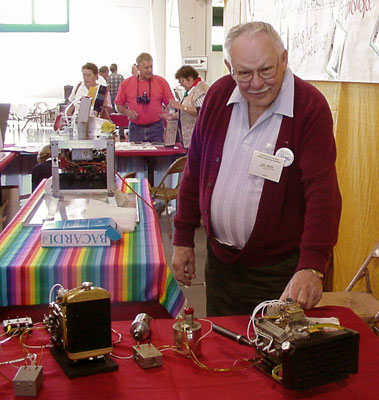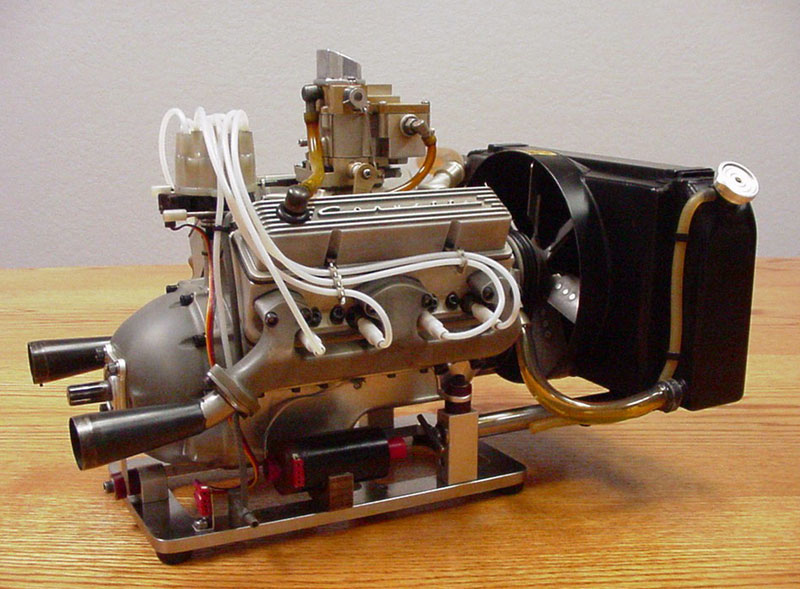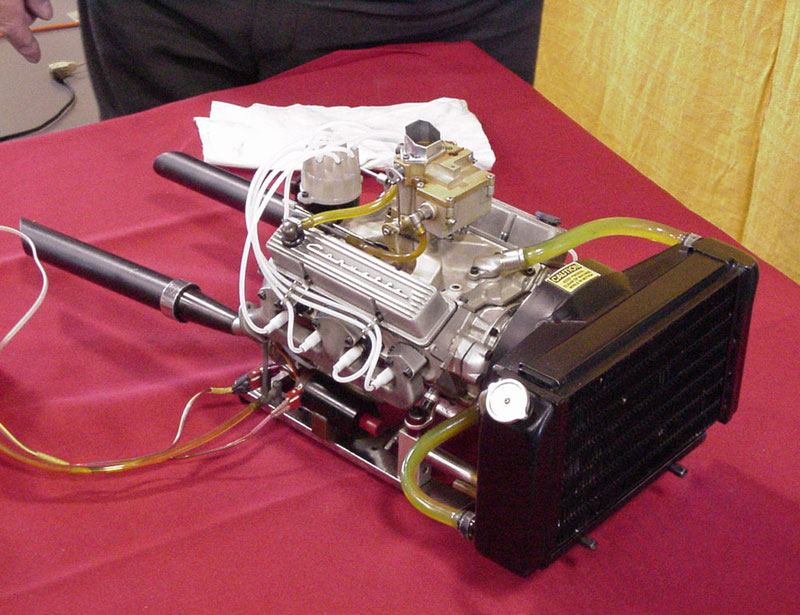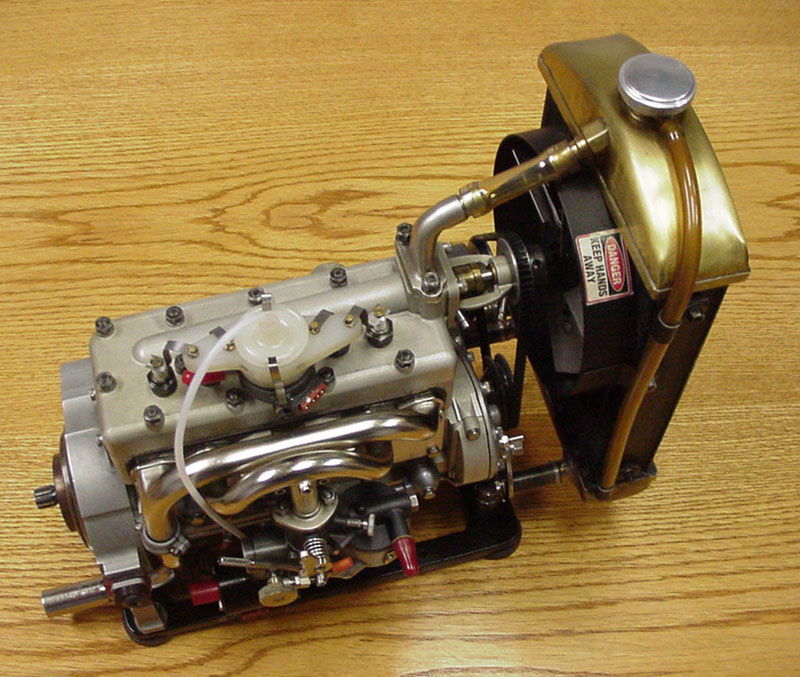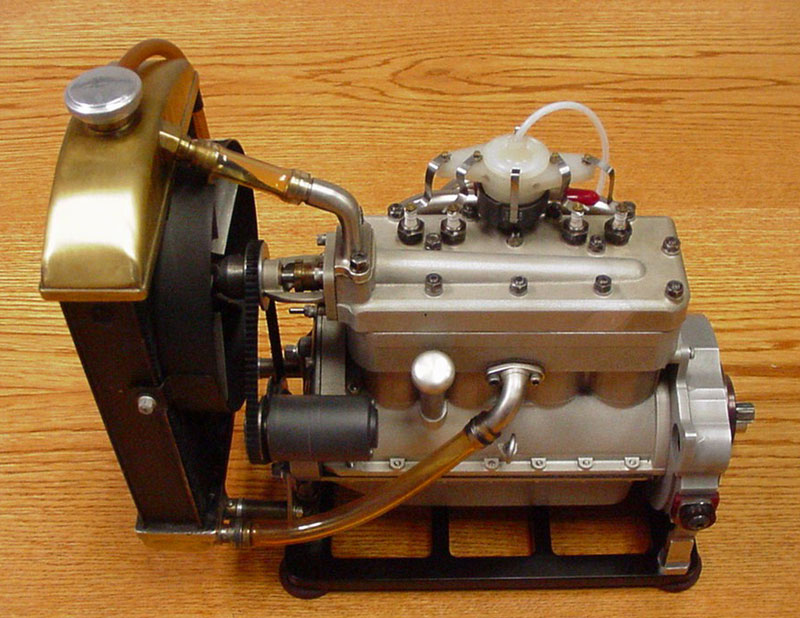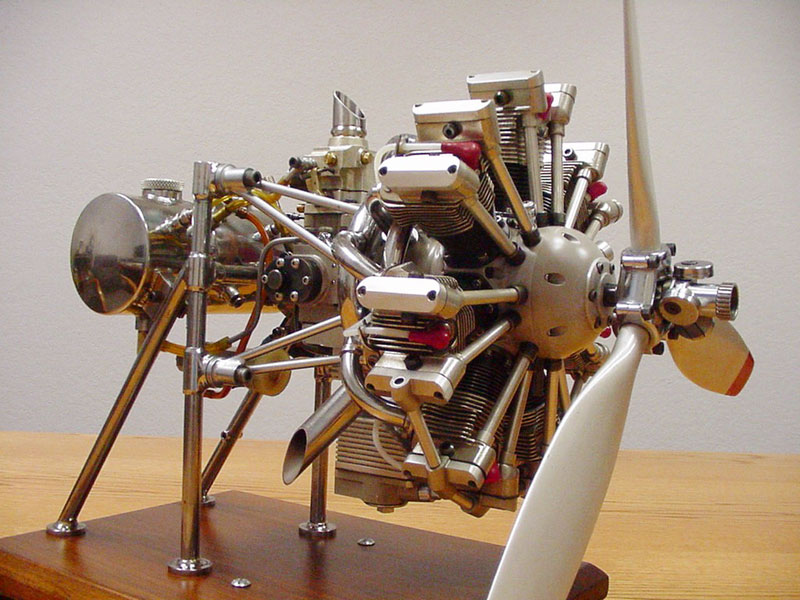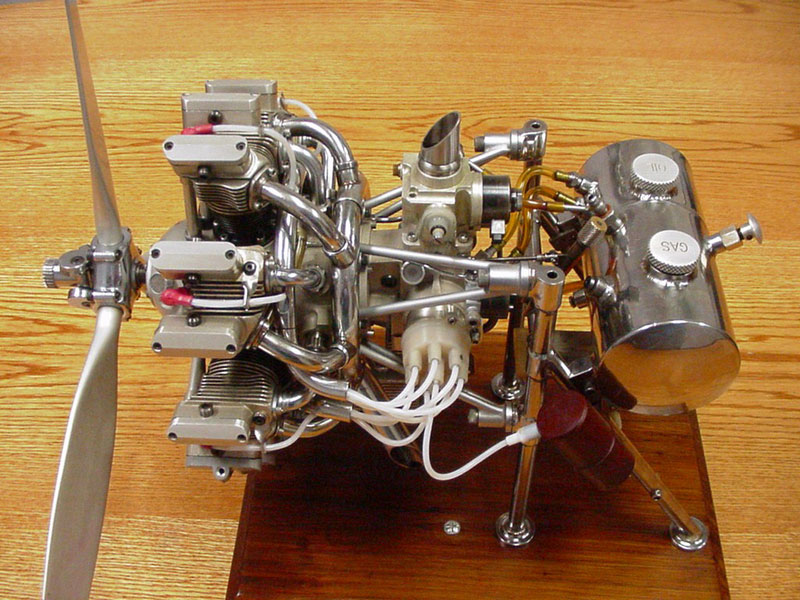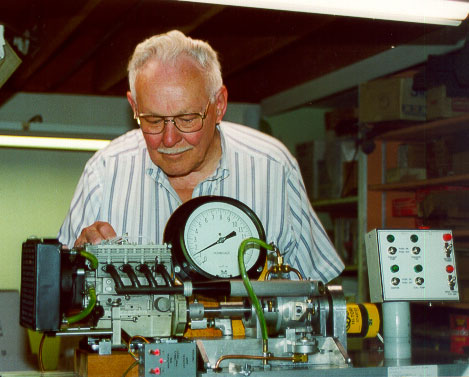February 4, 1919—June 1, 2000
Beautiful Scale Engines Built to Run
Lee Root stands behind his display of engines at the PRIME show in Oregon. He was preparing to fire up his Corvette V-8 engine for the crowd.
Introduction
While the following page documents the work of Lee Root, it is unfortunately short on biographical information. It has been difficult to find family or friends able to lend insight into the man’s life. However, many attendees of a range of model engineering shows will recall Lee and his engines. Further, they will likely remember the joy with which Lee displayed those fine engines. To Lee, engines were always meant to be run, and the louder the better. The rosy-cheeked man could always be seen with a big grin on his face, especially when firing up one of his own creations.
Lee was born in Russia in 1919, and immigrated to the United States as a young man. He settled in the Seattle area, graduating from West Seattle High School. In 1985, he moved to Redmond with his wife, Rose.
Lee’s 1/4 scale V-8 Corvette engine. He machined aircraft grade aluminum to produce the crankcase, heads, rods, and pistons. No castings were used. The cylinder liners are cast iron, and the crankshaft and cam are heat-treated 4340 steel. He used a full-size Corvette cam to derive the cam profiles.
At the time of his death in 2000, Lee was working as production manager for Blaser Die Casting in Seattle. Lee was associated with Chrysler, Ford and General Motors as a historian and technical model builder. His work earned him two championships with the Pacific Rim International Model Engineering (PRIME) Club at their shows in Eugene, Oregon.
Lee built this replica 1928 Model A Ford engine at 1/4 scale. The engine was machined from 7075 aircraft grade aluminum, and clear anodized for color and finish. It’s a 4-cylinder, water cooled, side valve engine with a 180° crankshaft. Side valve means that the valves are located in the crankcase next to the cylinders.
Remarkably, Lee never produced any drawings for the engines that he built. He worked strictly from his imagination, so unfortunately no plans are available for his unique engines.
Engine collector Paul Knapp was a friend of Lee’s, and now has Mr. Root’s engines in his collection. Four of those engines—the Corvette V-8, the fuel-injected DOHC in-line four, the Model A Ford in-line four, and the 7-cylinder radial—are now on display in the Miniature Engineering Craftsmanship Museum in Carlsbad, CA as part of the Engine Collection of Paul and Paula Knapp.
Lee built this 7-cylinder radial aircraft engine around 1975. No castings were used, and the engine was truly ahead of its time when built. In fact, it is more advanced than most radial engines built today.
Chevy Power magazine published a 5-page article about Lee and his miniature Chevy V-8 in May, 1978. Dick Lafayette was the author. We thank Randall Brauer for finding and scanning the article for us.
View more photos of Lee Root’s exceptional engines.
Lee is pictured testing his dual overhead cam (DOHC), 4-cylinder engine on a dyno. He named this engine the “Root Special.” Lee developed the scale engine to test a miniature electronic throttle body fuel injection that he was working on in the 1980’s. The Root Special engine is now on display at the Craftsmanship Museum as part of the Paul and Paula Knapp Collection.

